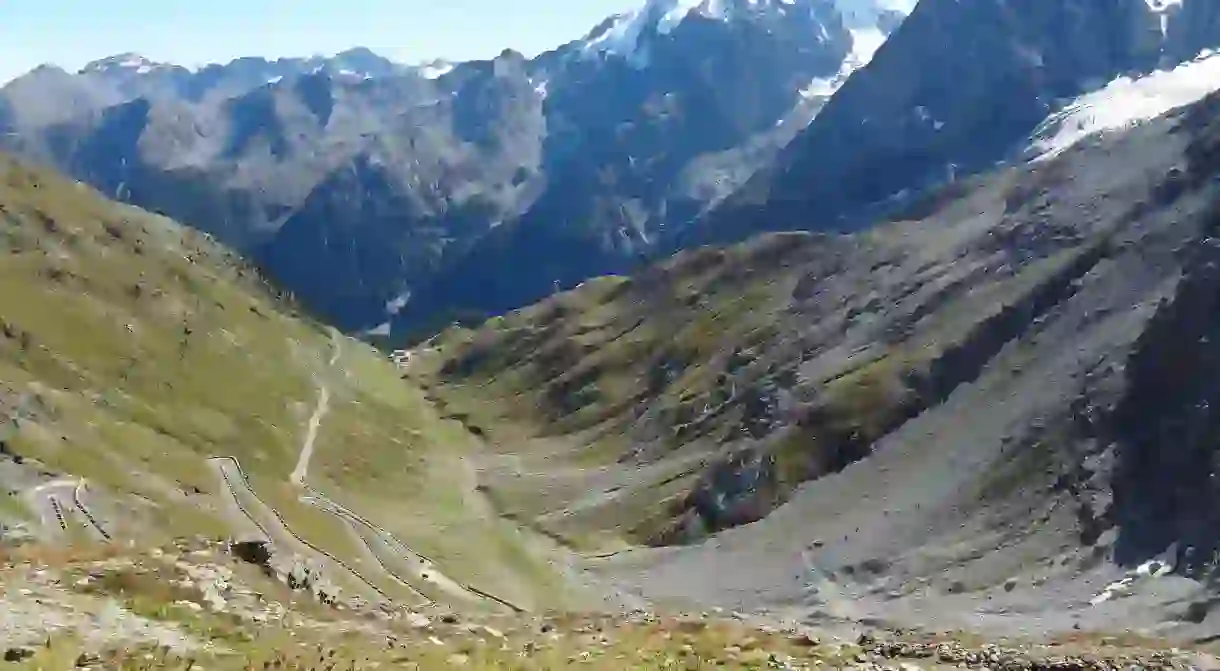Incredible Giro D'Italia Locations to Ride

When it comes to cycling’s grand tours, the Tour de France is undoubtedly the most famous, but the Giro D’Italia is the connoisseur’s choice. Cooler, harder and more varied than the Tour, it has some truly exceptional places to ride.
Every spring for over a hundred years (barring the outbreak of the World Wars) the Giro D’Italia has rolled across Italy. From the monstrous climbs of the Alps and Dolomites in the north, to the the dusty, baked terrain of the Sicily and Calabria in the south, it is arguably cycling’s toughest test. We asked Brendan Gallagher, author of Corsa Rosa: A History of the Giro D’Italia, to pick out some of his favourite spots to ride across the peninsula.
‘The whole country is fascinating, let’s be honest, Italy doesn’t need much selling,’ Gallagher explained. ‘Covering the event is fantastic fun, and the beauty of cycling over other sports is that you can ride the exact same roads included in the race. In football you can’t take your boots to Wembley and have a kick about, next month you can ride the same routes and same climbs featuring in the Giro right now. It sounds obvious, but nothing is more Italian than the Giro D’Italia.’
Sicily
‘Sicily is great. It is way down south and used to be ignored in the early Giri but the crowds are like Tour de Yorkshire crowds. It’s becoming a great spot, with guaranteed good weather, so it’s great for visitors most of the year. There is some very tough terrain, with very few flat roads and the Mount Etna climb. They don’t go all the way up, but it’s still a big lump of the mountain and it comes straight out of the sea so you really get that sense of height.’
Passo di Gavia
‘Situated in the Alps, with two amazing lakes located near its 2,600 metre summit, the Passo di Gavia has a brutal reputation. First included in the Giro in 1960 it has become famous for stages raced in snow, sleet and wind. It is the 10th highest paved road in the Alps, so not one for the faint-hearted.’

Abruzzo
‘The Abruzzo is an area where a lot of previous Giri have been decided. It’s not the Alps, but it is really, really tough territory that catches people by surprise. The race tends to come to climax in the Dolomites, but the Abruzzo region should still be considered tough territory. The roads aren’t as good as in the north and the weather can be pretty savage.’
Tuscany and Umbria
‘Not huge mountains by Italian standards, but very beautiful and off the beaten track. One of the great joys of covering the Giro in May is that it’s not the holiday season so the crowds are smaller. This area is fantastic for amateur cyclists because it doesn’t require loads of planning; you can ride around and pitch up at amazing little tavernas dotted all over the region.’

Passo dello Stelvio
‘One of the most recognisable and iconic climbs in cycling thanks to its 48 hairpins that snake their way up to its summit. The road needs opening in May, with dynamite often used to start avalanches that clear the snow. Attacks on the climb are fleeting because the mountain is aggressive enough to do that for you.’

Sardinia
‘The Giro has started in Sardinia three times and [the terrain here] provides its own particular tests to riders. It doesn’t have huge climbs, but it’s rarely flat and there is plenty of wind to keep concentration levels up. There are fantastic cycling routes all down the east coast of the island, especially between Olbia and Tortoli.’
Monte Zoncolan
‘Anyone looking for the toughest of challenges can attempt a climb that Lance Armstrong believed was the toughest that he ever faced. Part of the Carnic Alps, it is home to a kilometre that averages at a fraction under 20%, and climbs to a 1,750m summit.’

SaveSave













